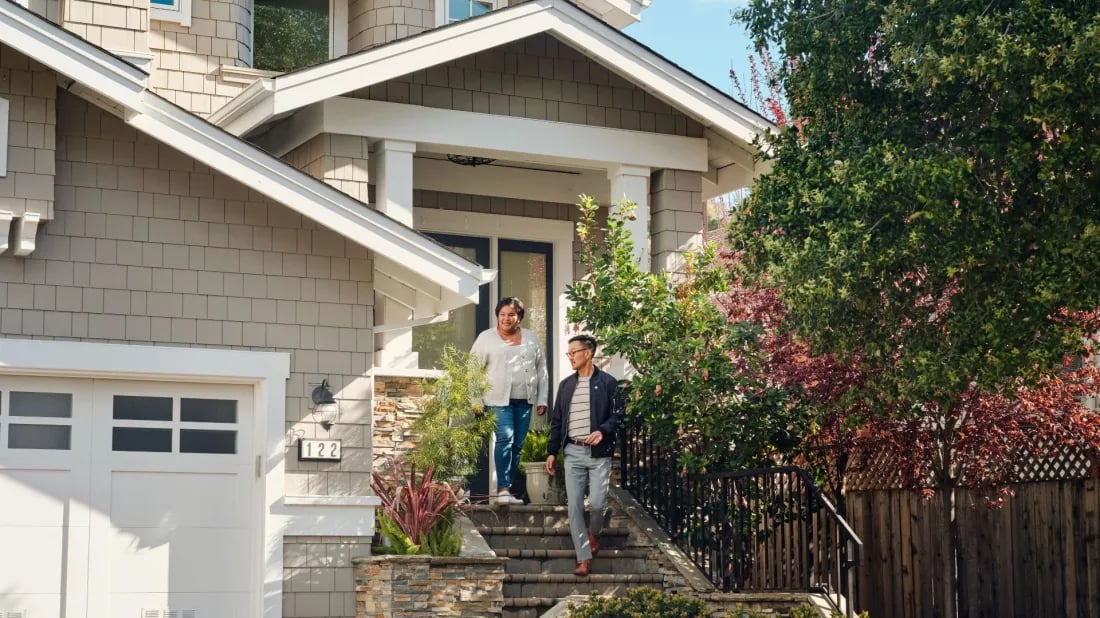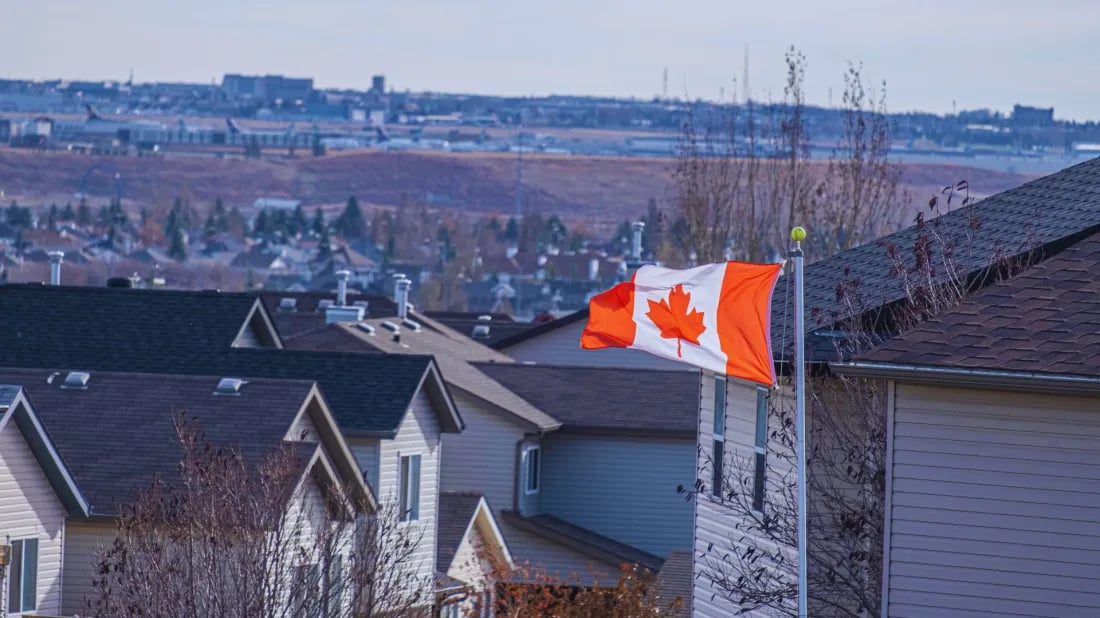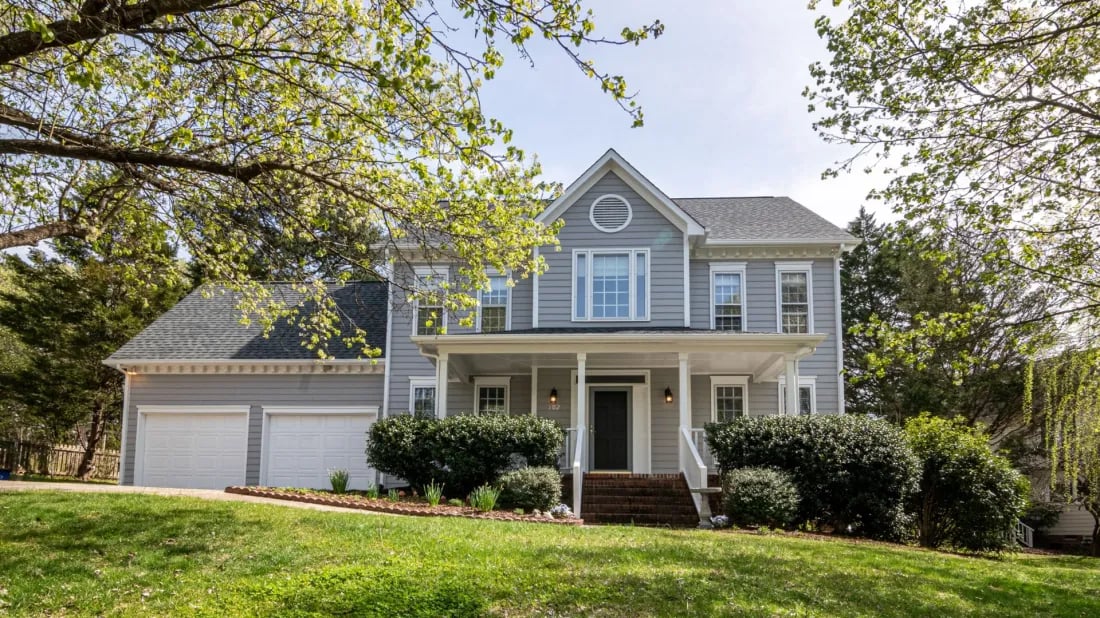The Canadian real estate market is showing signs of slowing now that interest rates are rising. Despite sales activity sliding and prices moderating, the country’s housing sector is still leaving many hopeful homebuyers sitting on the sidelines.
According to the Canadian Real Estate Association (CREA), national home sales have been declining over the course of 2025. The MLS® Home Price Index (HPI) declined by 1.2 percent month-over-month and by 3.6 percent year-over-year. Meanwhile, the actual (not seasonally adjusted) national average sale price declined 9.8 percent year-over-year.
New residential listings fell 1 percent month-over-month, and months of inventory are sitting at 5.1 months.
Of course, some housing markets are much more expensive than others, such as Toronto. Could a rent-to-own program be the solution for many Canadians itching to become homeowners, particularly in markets that are in high demand?
The option is becoming more prevalent as prices continue to be out of reach of many Canadians.
How Do Rent-to-Own Properties Work?
Households paying rent to a homeowner or property management company can feel like throwing money out the window instead of putting it toward equity on a home of their own.
This is why more companies and even the government are looking into rent-to-own programs. The innovative service works much like the rental market, except a portion of your monthly rent goes toward the purchase of the residential property you are renting. For the most part, your rent will be divided into two parts: a large percentage for the rent and a smaller percentage for your down payment and home equity.
Now, there are two types of rent-to-own programs:
- Option-to-Purchase: An agreement that provides the tenant with an option to acquire the home when the rental term is complete.
- Lease Purchase: A deal to buy the property at the end of the term, and if you fail to do so, you will pay a penalty.
Put simply, you complete your monthly payments, accumulate rent credit, and then apply for a mortgage at the end of the term. It works similarly to how you pay rent in your apartment building.
How Does Rent-to-Own Work Toward Homeownership?
For many Canadians wondering how rent-to-own works, it’s a stepping stone to property ownership. This arrangement gives you time to improve credit scores, save for a larger down payment, or stabilize your financial situation before committing to a mortgage. Additionally, rental rent-to-own agreements allow you to “test drive” a neighbourhood before making a permanent commitment.
Here are some other features of a rent-to-own program:
- The future purchase price of the house is typically locked in, although some contracts might include the future appraised value at the end of the lease.
- Tenants pay an initial fee of at least two percent of the agreed purchase price.
- You might need to make additional regular payments to add more to your down payment.
- Households are responsible for covering the cost of maintenance and repairs.
Rent-to-own homes provide a pathway to homeownership for those who might otherwise struggle with traditional mortgage requirements. It gives the opportunity to build equity while renting, as a portion of your monthly payments goes toward your future home purchase.
The Impact of Rent-to-Own Homes in Canada
Housing experts note that Canadian homebuyers may not be approved for a mortgage because of tightening standards, from the enhanced mortgage stress test to growing income requirements. And this could impact your money.
“If they do not qualify, [they are] at a significant risk of losing any sweat equity or savings they may have put into the home,” Melanie McLister, a co-founder and mortgage broker at intelliMortgage, told Global News. “Some put in a considerable amount of both, feeling confident the home will be theirs in the end.”
But is it popular enough? Ottawa seems to think there is an appetite in the marketplace, especially among the large number of renters who want to enter the real estate market but do not possess enough upfront capital. While former Prime Minister Justin Trudeau and his Liberal government pledged to commit more than $1 billion toward various rent-to-own initiatives across the country, the new liberal government led by Prime Minister Mark Carney has approached housing affordability through different policy mechanisms.
The federal approach emphasizes removing barriers to construction, with particular attention to what Poilievre calls “the gatekeeper problem” of bureaucratic delays. This policy direction aims to increase overall housing supply and create more opportunities for various paths to ownership, including rent-to-own arrangements.
Market analysts question if there is enough demand among renters for this program.
“One of the reasons why it hasn’t been that prevalent and not that common is that it’s just not that clear that it’s in the renter’s interest to get into these contracts,” Peter Norman, chief economist at Altus Group, a real-estate consultancy, told TVO. “It’s a little bit like leasing your car — if you run the numbers on that, it’s often a lot less affordable than actually buying one; all it does is provide you an opportunity not to have to put all the money upfront.”
Indeed, with price inflation eating away at wage gains and forcing consumers to touch their immense pandemic-era pent-up savings, it is increasingly more challenging to get involved in the Canadian real estate market boom.
Desjardins economists project that housing affordability is unlikely to return to pre-pandemic levels before 2027, even with anticipated interest rate cuts that should make home buying somewhat easier in Canada’s largest provinces in the coming months.
“But affordability will remain under pressure as mortgage rates go up in response to the Bank of Canada’s recent quantitative tightening and policy interest rates have begun to rise,” the bank wrote.
Rent-to-Own: How to Get Started
If you’re considering how rent-to-own works and want to explore this path to homeownership, here are practical steps to get started:
- Assess your financial situation. Determine how much home you can afford, both in terms of monthly rent payments now and mortgage payments later.
- Research reputable rent-to-own programs in your target location. Look for companies with positive reviews, transparent terms, and a solid track record of successful conversions to ownership.
- When you’ve found potential properties, carefully review all contract terms. Pay special attention to the purchase price calculation, what percentage of your rent goes toward equity, maintenance responsibilities, and your obligations if you decide not to purchase.
- Consider working with a real estate lawyer who understands how rent-to-own properties work to review agreements before signing. This small investment can prevent costly misunderstandings later.
- Prepare necessary documentation such as proof of income, identification, and references. Most rent-to-own programs will require an application process similar to standard rentals, but with additional financial scrutiny since the arrangement involves a future purchase commitment.
Remember that while rent-to-own and how it works vary between providers, most programs require an initial deposit that demonstrates your serious intention to eventually purchase the property, typically 2-5 percent of the anticipated purchase price.




